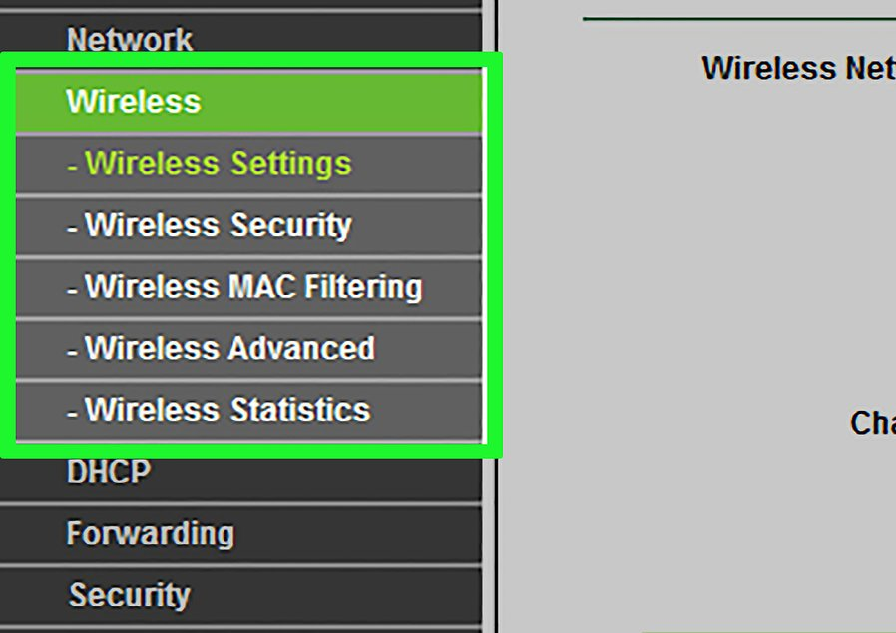How to Set Up a Wireless Router
- Future Freedom Telecom

- Dec 30, 2018
- 6 min read
As more and more devices are able to connect to wireless networks, setting up a wireless router has become a crucial step for virtually any home network. Setting up a wireless network will allow your devices to connect to the internet from practically anywhere in the house, without the need for messy wires. To get started setting your network up, see Step 1 below.

1. Purchase a wireless router. Routers come in all shapes and sizes. Compare features to find the router that is right for you. If you have more area that you need to cover, or have lots of walls in your home, you’ll need a router that offers the option of upgrading antenna(s) with high gain types - if not supplied in the box. If more than one wireless device will be connecting at the same time at different speeds, a MiMo type router is recommended, otherwise the speed for all devices will drop the highest supported by all at that time.All modern routers should support 802.11n, or Wireless-N). This is the most stable, offers the fastest speeds and is backwards compatible with older standards such as 802.11g.

2. Connect your router to your modem. Routers and wireless routers enable you to share your broadband internet connection with multiple devices. To do so, you will need to connect your broadband modem to the router. For best results, place your router near your modem.Connect the router and the modem with an Ethernet cable. Most routers come packaged with a short Ethernet cable that you can use for this.Connect the modem to the WAN / Internet Port on your router. It is usually offset, and may be a different color from the LAN Ports. WAN stands for "Wide Area Network" which is what the internet actually is. LAN stands for "Local Area Network". The router will assign a local or "private" IP address to any device connected to its LAN Ports or WiFi signal from a pool of private addresses (listed further below).

3. Connect any devices you want to hard wire with CAT 5 (or better) Ethernet cables. If you have computers that are close, or a video game console or TV, you can connect them to the router via Ethernet. This will result in a more stable and faster connection, and doesn’t require any extra configuration.

4. Connect at least one computer via Ethernet. You will need at least one computer connecting via Ethernet cable in order to adjust your router settings. You can disconnect this computer afterwards if you want to connect wirelessly. You can also connect your laptop wirelessly for the first time, the wifi network name and the default password will be printed on the router's label
PART 2 Connecting Your Router To Broadband Providers

1. When you power on the router, it will only create its wi-fi network, and the device will be connected to the router's wi-fi connection, not the internet. To connect the router to the internet, with some internet providers (i.e. GTPL in India), it is required to register router's MAC address to the internet service provider's website.MAC of the router can be found printed on router or in the documents etc.

2. Go to the internet service provider's website. Log in with the username and password provided by the internet service provider and go to MAC address update option. one can see their existing laptop / computers MAC address there. Add the router's MAC address there and save it. This process means that the router is authorized to use the internet provide by the broadband company.
PART 3 Configuring the Router

1. Find the IP address of the router. If this is a new installation or new router, determine the default IP address that may be printed on a label affixed to the router or in the documentation. If you can’t find the router’s IP address anywhere, you can do a web search for the router model to see what the default address is.
IP addresses are formatted as four groups of up to three digits, separated by periods.
Commonly found "default" Local IP addresses for routers are 192.168.0.1, 192.168.1.1, 192.168.2.1, 10.0.0.1. Note that all the addresses in the follow ranges: 192.168.0.0 - 192.168.255.255, 172.16.0.0 - 172.31.255.255 & 10.0.0.0 - 10.255.255.255 have been set aside for exclusive use in a LAN; and one address in the range of any of them of them would be assigned to the connected router.

2. Open a web browser on the computer that is connected to the router. Enter in the IP address of the router into the address bar and press Enter. Your browser will attempt to connect to the router’s configuration menu.
If your router came with an installation disc, you can run the configuration program from that instead. It will accomplish many of the same functions.

3. Enter your username and password. In order to access the configuration page, you will need to be on the router's IP address and enter a valid username and password at the prompt. Most routers have a basic account set up that you will need to use to log on. This varies from model to model, but should be printed on the router or in the documentation.
The most typical username is “admin”.
The most typical passwords are “admin” and “password”.
Many routers will only require a username and a blank password, and some allow you to leave all fields blank.
If you can’t figure out the correct IP address, your username or password, search for your router model online to see what the default login is. If it has been changed, press the Reset button on the back of the router for 10 (to 30+ seconds as dictated in the instructions for the router model) to restore factory defaults and try again.

4. Open the Wireless Settings. When you log in to your router, you will be taken to the router’s main menu or status screen. There will be several options to choose from. The Internet section can usually be left at default settings, unless you received specific instructions from your internet service provider. The Wireless section will allow you to set up your wireless network.

5. Enter a name for your wireless network. In the Wireless section, you should see a field labeled SSID or Name. Enter a unique name for your wireless network. This is what other devices will see when scanning for networks.
Check the box to enable SSID broadcast. This will essentially “turn on” the wireless network so that it may be readily seen by anyone in range of the signal. *See the Tips section below for additional information on the SSID setting.

6. Choose a security method. Choose from the list of available security options. For the best security, choose WPA2-PSK as the encryption method. This is the most difficult security to crack, and will give you the most protection from hackers and intruders.

7. Create a passphrase. Once you’ve chosen your security method, enter in a passphrase for the network. This should be a difficult password, with a combination of letters, numbers, and symbols. Don’t use any passwords that could be easily deduced from your network name or from knowing you.

8. Save your settings. Once you are finished naming and securing your wireless network, click the Apply or Save button. The changes will be applied to your router, which may take a few moments. Once the router has finished resetting, your wireless network will be enabled.

9. Change your router’s username and password from the default. Once you have your network configured, you should change the username and password that you use to access your router. This will help protect your router from unauthorized changes. You can change these from the Administration section of the router configuration menu

10. Block sites. If you want to prevent devices that are connected to your network from accessing certain websites, you can use built-in blocking tools to restrict access. These can be found in the Security/Block section of the router.
You can usually block by specific domain names, or by keywords.
PART 4 Connecting Your Devices

1. Connect a computer, tablet, or smartphone to the wireless network. Scan for the wireless network with the SSID you provided above. On any device that supports wireless networks, you should see your new network as long as you are within range of the router. Select it and you will be prompted for the passphrase.

2. Enter your wireless passphrase. Once you enter the passphrase, your device will be automatically connected to the wireless network. The network will be stored in your devices memory and will automatically connect whenever you are within range.

3. Connect your other devices. Besides other computers and tablets, you can connect other devices as well, such as printers, game consoles, TVs and more






Comments